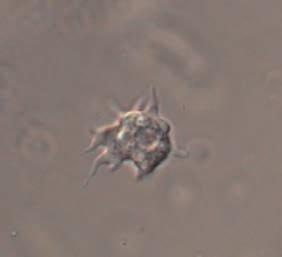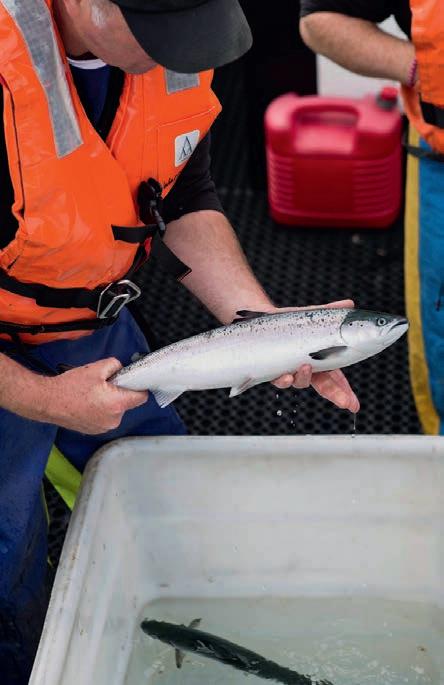
6 minute read
Norway










Problems persist
The latest report on mortalities in the Norwegian salmon industry show that the numbers are still too high
BY VINCE MCDONAGH








Ahighly cri� cal report on the state of fi sh health in Norway’s salmon sector has been published by the country’s Veterinary Ins� tute.
Parts of it do not make for comfortable reading with calls for new thinking to tackle the various problems.
The latest data from the Norwegian Veterinary Ins� tute Fish Health Report 2020 shows that more than 52 million farmed fi sh died before their scheduled harvest date last year.
The fi gure is close to the record total in 2019 when 53 million fi sh died prematurely, but that was the year when algae unexpectedly struck a sec� on of the Norwegian coastline, resul� ng in eight million extra deaths. Taking that incident out of the picture, 2020 has to be the worst year yet.
The report says that such a high fi gure suggests too many fi sh are prone to diseases of one sort or another.
The Ins� tute’s department director Edgar Brun said: “The challenges within welfare and disease in salmon have not improved in Norwegian farming. When our eff orts are not having an eff ect, it is � me for new thinking on the problem.”
Norway’s Fisheries Minister Odd Emil Ingebrigsten said the mortality rate was far too high and mainly due to the way salmon lice were being treated. He also expressed concern about the number of Infec� ous Salmon Anaemia (ISA) cases although the country did have an effi cient monitoring system which was able to contain outbreaks.
The report provides an annual picture on fi sh health using data gathered from fi sh farms, fi sh

Above from top: Freefl oa� ng amoeba Paramoeba perurans; AGD on gills of Atlan� c salmon indicated by patches of white discolora� on; Dr Sophie Fridman and PhD researcher Carolina Fernandez collec� ng gill samples and isolates of Paramoeba perurans; Photomicrograph showing amoebae on gills Top right: Pancreas Disease in salmon Right: Checking the salmon Top left: Sea lice; Edgar Brun Left: Furunculosis in salmon health services, private laboratories and the Ins� tute’s own diagnos� cs.
Ingunn Sommerset, head of fi sh health at the Ins� tute, said the situa� on had worsened despite many in the industry making great eff orts to tackle disease, lice and premature mortality.
She suggested the explana� on probably lies in an interplay of nega� ve eff ects in the treatment of lice and infec� ous diseases, which have existed in the industry for a long � me.
Diseases such as infec� ous salmon anaemia (ISA), pancrea� c disease (PD) and heart failure (CMS) were all widespread in Norwegian fi sh farms last year.
In addi� on, the industry saw the emergence of pasteurellosis, a new bacterial disease among salmon which seems to have gained a foothold in Western Norway.
Not every stretch of the coastline is the same, however. The area between the picturesque holiday area of Nordhordaland and Stadt, known as Produc� on Area 4, had some of the worst results with mortality at 27%, up from 19.4% the previous year.
She said there was no simple explana� on for this, but it was an area where the hot water thermal delicing treatment had been used the most. However, the number of lice treatments did not diff er that much from those in other parts of the country.
Produc� on area 4 had a total of 56 cases of pancrea� c disease (PD) out of a total of 158 in all of Norway, but as yet there was li� le or no clue as to how much extra mortality PD causes.
The report says the number of Infec� ous Salmon Anaemia cases was the highest since 1993, with 23 new detected cases at sea-based salmon farms, twice the total for 2019.The disease was detected at seven produc� on areas along the coast, but the main focus has been on the Troms and Finnmark region (produc� on Area or PO 10-12) with a total of 15 detec� ons.
About half of the ISA cases in 2020 were considered to be primary outbreaks. This means they could not be linked to previous incidents or another clear source of infec� on.
Director Edgar Brun said that when current treatments do not give the desired results in terms of reducing illness and improving welfare, it was � me to look again at how to deal with the issues.
“We can do more to reduce infec� on contact between geographical areas in order to eradicate or reduce the disease burden, as well as to look at strategic measures to reduce the need for lice treatments.”
It was important to obtain a na� onal overview of what diff erent issues caused deaths in fi sh.
“Research, administra� on and the industry itself are engaged in this now, so we should be able to gain knowledge that can provide a basis for targeted measures,” he concluded. FF
KEY THREATS
PANCREATIC DISEASE (PD)
The number of plants with pancrea� c disease sys the report, remains at a high level with 158 new cases, slightly up on 2019. There had been an increase in the number of cases of PD caused by the SAV-3 variant in Produc� on Area 2.
HEART FAILURE (CMS)
The Norwegian Food Safety Authority says heart failure is seen as the main problem in the food fi sh leading to premature mortality in salmon last year with CMS diagnosed at 154 sites, the majority in the southern and central parts of the country.
FURUNCULOSIS
A disease of both wild and cul� vated salmon that can lead to bacterial sep� caemia and is o� en fatal if not treated promptly with an� bio� cs. The disease, which does not pose a threat to humans, was detected in fi ve sea locali� es last year.
HSMB
Commonly known as Cardiovascular infl amma� on, this is a serious unlisted disease, but as a cause of mortality it is ranked somewhat lower. HSMB disease was confi rmed in 161 locali� es.
COMPLEX GILL DISEASE
Gill disease causes mortality, reduced welfare and lower growth. The report says it is one of the health problems that registered the highest increase last year.
Source: Norwegian Veterinary Insti tute Fish Health Report 2020











